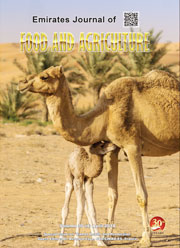Chemical analysis and protein enzymatic hydrolysis of poly-floral bee pollen
DOI:
https://doi.org/10.9755/ejfa.2023.v35.i1.2928Abstract
This study assessed chemical components and enzymatic hydrolysis of bee pollen (BP) as an approach to modify its structure and generate bioactive peptides which can be used as functional ingredients. The food grade proteases Alcalase 2.4L and Protamex were used at optimized parameters. The degree of hydrolysis (DH), protein content and molecular mass (MM) distribution of the soluble peptides in hydrolysates were determined as indicators for enzymatic hydrolysis. The highest DH was reached by Alcalase 2.4L (10.39 %), whereas Protamex showed the lowest (9.31 %). The total protein content recovered from the hydrolysates was 16.01 % w/w for Alcalase 2.4 L and 15.51 % w/w for Protamex. Electrophoretic profile for Alcalase 2.4L and Protamex showed a range of low molecular (4.5 kDa) and low – medium mass peptides (5.8-51 kDa), respectively. Protein recovery and analysis of peptides MM distribution provides data for further research, taking into account the trend of using BP peptides in food products.










 .
.